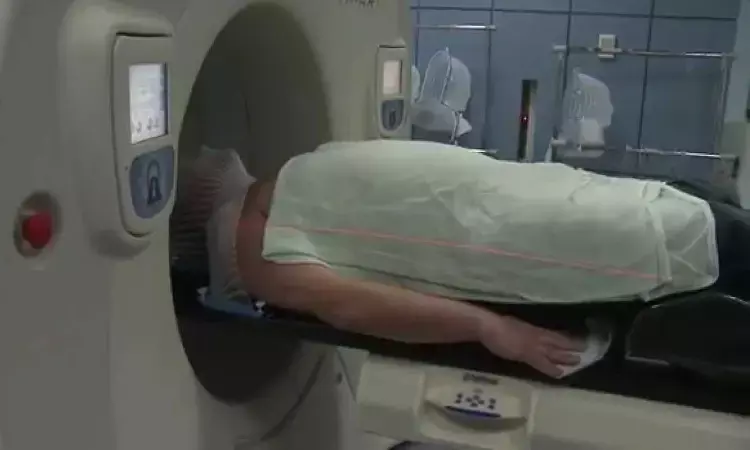- Home
- Medical news & Guidelines
- Anesthesiology
- Cardiology and CTVS
- Critical Care
- Dentistry
- Dermatology
- Diabetes and Endocrinology
- ENT
- Gastroenterology
- Medicine
- Nephrology
- Neurology
- Obstretics-Gynaecology
- Oncology
- Ophthalmology
- Orthopaedics
- Pediatrics-Neonatology
- Psychiatry
- Pulmonology
- Radiology
- Surgery
- Urology
- Laboratory Medicine
- Diet
- Nursing
- Paramedical
- Physiotherapy
- Health news
- Fact Check
- Bone Health Fact Check
- Brain Health Fact Check
- Cancer Related Fact Check
- Child Care Fact Check
- Dental and oral health fact check
- Diabetes and metabolic health fact check
- Diet and Nutrition Fact Check
- Eye and ENT Care Fact Check
- Fitness fact check
- Gut health fact check
- Heart health fact check
- Kidney health fact check
- Medical education fact check
- Men's health fact check
- Respiratory fact check
- Skin and hair care fact check
- Vaccine and Immunization fact check
- Women's health fact check
- AYUSH
- State News
- Andaman and Nicobar Islands
- Andhra Pradesh
- Arunachal Pradesh
- Assam
- Bihar
- Chandigarh
- Chattisgarh
- Dadra and Nagar Haveli
- Daman and Diu
- Delhi
- Goa
- Gujarat
- Haryana
- Himachal Pradesh
- Jammu & Kashmir
- Jharkhand
- Karnataka
- Kerala
- Ladakh
- Lakshadweep
- Madhya Pradesh
- Maharashtra
- Manipur
- Meghalaya
- Mizoram
- Nagaland
- Odisha
- Puducherry
- Punjab
- Rajasthan
- Sikkim
- Tamil Nadu
- Telangana
- Tripura
- Uttar Pradesh
- Uttrakhand
- West Bengal
- Medical Education
- Industry
Women with dense breasts benefit from a tailored mammogram screening strategy

OAK BROOK, Ill: Women with dense breast tissue and benign breast disease face an elevated risk of future breast cancer and could benefit from a tailored mammogram screening strategy, according to a large study published in the journal in Radiology.
Benign breast disease refers to non-cancerous breast lumps, cysts or nipple discharge. It is a common condition that can affect both women and men.
Research has shown that mammographic breast density and benign breast disease are strong risk factors for breast cancer. Less is known about the combined impact of the two risk factors.
The new study investigated the risk of breast cancer associated with the combination of mammographic density and benign breast disease in 3.9 million Korean women. Breast cancer screening with mammography is provided for all women in Korea age 40 years or older, providing the researchers with a vast database for analysis.
During an average follow-up of more than 10 years, more than 58,000 women developed breast cancer. Of the women who developed breast cancer, 10,729, or 18.4%, had benign breast disease.
"While these benign breast diseases are not cancerous or life-threatening, our results, together with evidence from previous findings, show that they might increase the risk of breast cancer," said study senior author Boyoung Park, M.D., Ph.D., from the Department of Preventive Medicine at Hanyang University College of Medicine in Seoul, Korea.
Breast cancer risk was 3.2% in women with extremely dense breasts. This was significantly higher than the 1.36% risk in women with fatty breast tissue.
Together, the two risk factors raised the risk of breast cancer when compared with women with non-dense breasts and those without benign breast disease.
The study was the largest to examine benign breast disease and breast density in East Asian women. Its findings suggest that women with dense breast tissue and a history of benign breast disease may benefit from a tailored screening regimen. Supplemental screening with MRI or ultrasound is often recommended for women at high risk of breast cancer.
"With the current findings, we believe that women with dense breasts and the presence of benign breast disease would be potential targets for supplemental screening," said coauthor Soyeoun Kim, M.P.H., a Ph.D. candidate in Dr. Park's lab.
Screening frequency may also need to be adjusted in these women. Current recommendations vary from country to country. The American Cancer Society (ACS), for instance, recommends yearly screening in women beginning at age 45, with the option to begin at age 40. High-risk women should get yearly mammography and breast MRI starting at age 30, according to ACS recommendations.
The researchers are currently working on a larger project with the ultimate goal of developing a new breast cancer prediction model.
"We plan to develop a breast cancer prediction model that is more relevant to Asian women and includes new features that were not considered in the previous prediction models, such as benign breast diseases and breast density detected on mammograms," Dr. Park said.
Reference:
Mammographic Breast Density, Benign Breast Disease, and Subsequent Breast Cancer Risk in 3.9 Million Korean Women Soyeoun Kim, Thi Xuan Mai Tran, Huiyeon Song, Seungho Ryu, Yoosoo Chang, Boyoung Park Published Online:May 17 2022 DOI: https://doi.org/10.1148/radiol.212727
Dr Kamal Kant Kohli-MBBS, DTCD- a chest specialist with more than 30 years of practice and a flair for writing clinical articles, Dr Kamal Kant Kohli joined Medical Dialogues as a Chief Editor of Medical News. Besides writing articles, as an editor, he proofreads and verifies all the medical content published on Medical Dialogues including those coming from journals, studies,medical conferences,guidelines etc. Email: drkohli@medicaldialogues.in. Contact no. 011-43720751


